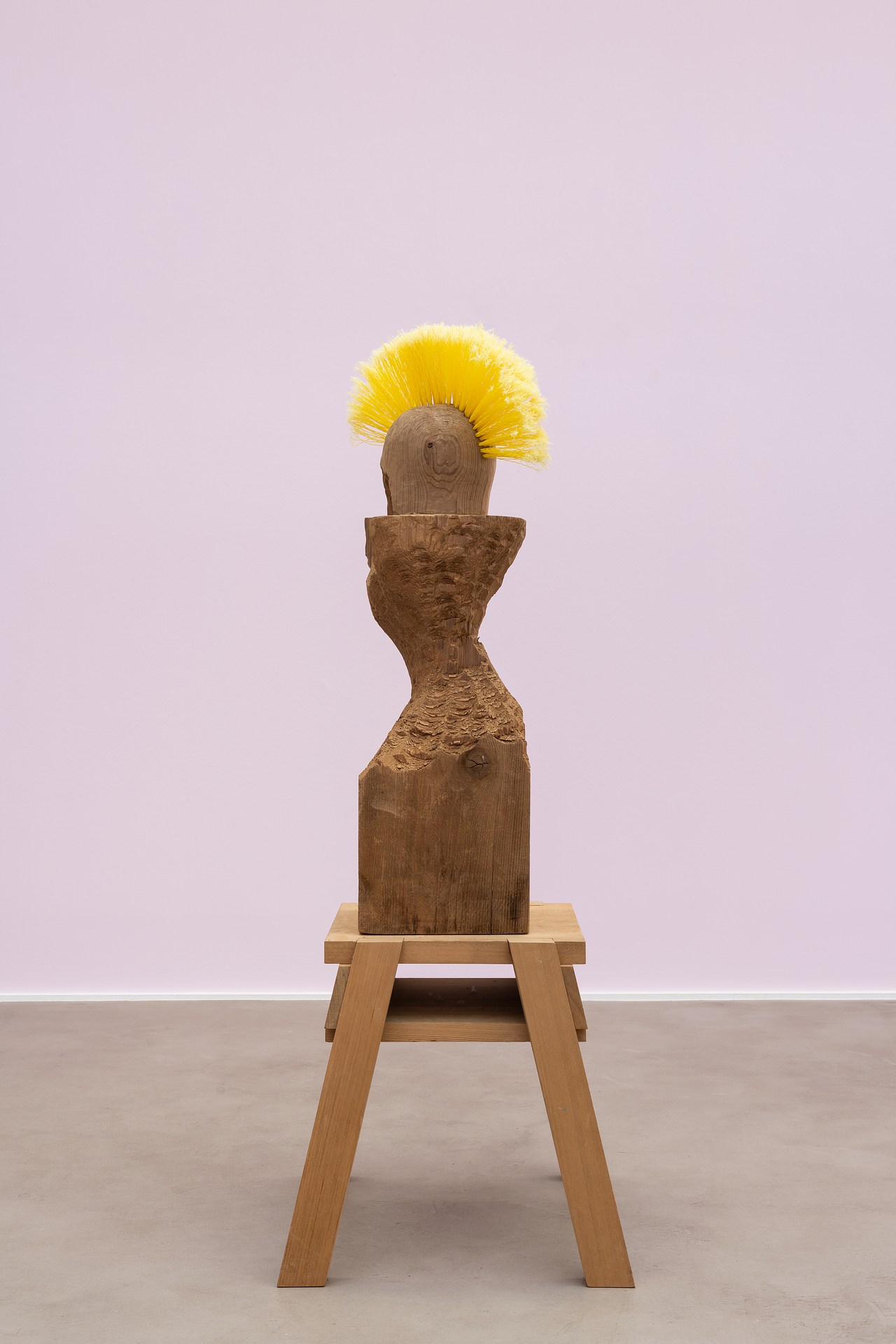Glorie #7
2022 - Sculpture (Sculpture)
15 x 28 x 17 cm
Caspar Heinemann
Glorie #7 by Caspar Heinemann is made from cardboard boxes in which the artist received deliveries at home during lockdown, as well as other materials that he uses in an improvisatory way. Initially, Heinemann began this project by wanting to make a series of birdhouses, an interest of his that derived from walking in parks during lockdown, when bird life was so much more present as a result of the reduction in traffic noise and the absence of aircrafts. Though birdhouses may be safe spaces to nurture fledglings, they are also inherently absurd, as human constructs projected onto bird life. Creating a series of these birdhouses, Heinemann realized that there was a correlation between penetrating the boxes with his fingers and the sexual practice of fisting. Fisting is banned from pornography because it is perceived as violent, yet as a practice it became popular during the AIDS crisis as a means of having safe sex. As Heinemann puts it “queer care is perceived as violence.” Intricately symbolic, the work is decorated in painted daisy chains (a queer symbol of group sex) of fisting figures. The sculpture is also smeared in Hubbard’s Shoe Grease, which is popular with leather/fetish communities both for its smell and its body-safe composition for use as a sexual lubricant. Both kitsch and beautiful, the sculpture has a provisional sensibility—of having undergone primitive repair, of making do and getting by, of imagined encounters during a period of isolation. It emanates fragility, improvisation, and homeliness in a form that signifies care for others, while at the same time being an unnatural form that humans create for nature to inhabit. What emerges is an object that is imprecise and inventive; ‘poor’ in materials, but rich in meaning.
Caspar Heinemann is a queer artist and writer who makes work that reflects and represents his gender and identity. Working with sculpture, drawing, text, performance, and theater, Heinemnn’s practice critically engages with the politics of land, occultism, folk revivalism, and sexual countercultures. The artist’s work tends to consider and present alternative interpretations of queer culture, specifically with regard to the themes of care, tenderness, desire, and pleasure.
Colors:
Related works sharing similar palette
» see more

© » KADIST
Aykan Safoglu
2013Off-White Tulips is an intimate, meditative, and tender essay-film composed as a fictional exchange between Black gay writer James Baldwin and the artist, Aykan Safoglu...
Related works found in the same semantic group
» see more

© » HYPERALLERGIC
Beauty and Danger in the Art of Ambreen Butt Skip to content Ambreen Butt, "Arsenal of Ambiguity" (2023), tea, coffee, watercolor, and collage on tea-stained paper, 44 x 30 inches (all images courtesy Gallery Wendi Norris) SAN FRANCISCO — Ambreen Butt: Lay Bare My Arms at Gallery Wendi Norris combines collage and text with traditional South Asian miniature painting to create energetic works that radiate delicate beauty, underpinned by a pervasive threat of violence...

© » KADIST
Sabelo Mlangeni
2019The Royal House of Allure is a name of a safe house on mainland Lagos where members of the queer community in need of boarding, due to various circumstances, live together...

© » KADIST
Akram Zaatari
1972“The two men were relatives and both were in the Lebanese Army.” Hashem El Madani...




